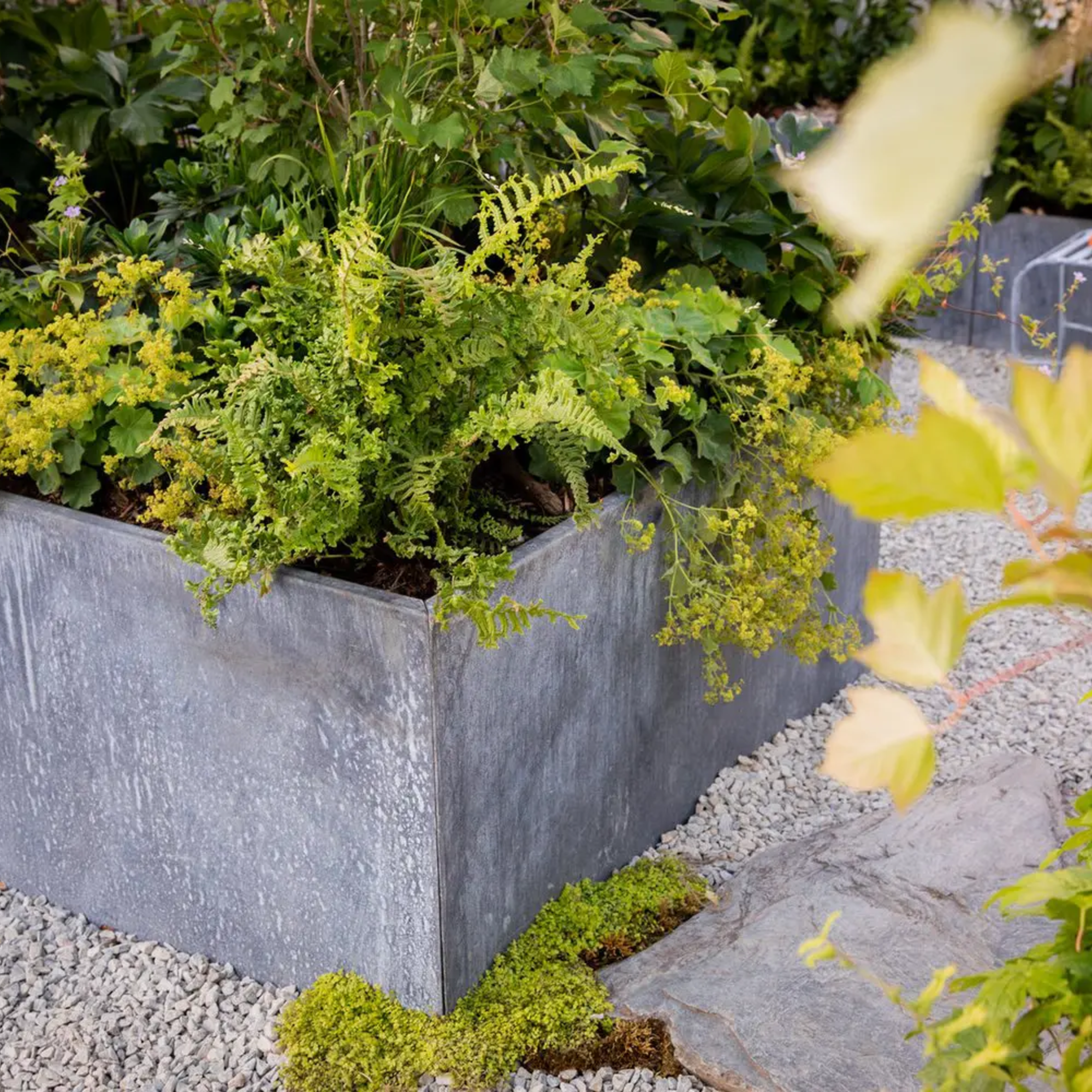How to prepare raised beds for winter – 5 ways to preserve them, from mulching to sowing cover crops
This is how to keep your raised beds in tip-top shape until next spring

Sophie King

If you're wondering how to prepare raised beds for winter, your gardening calendar is on point – now is the perfect time to be thinking about this important task.
Learning how to prepare soil for winter is a crucial step towards getting your garden ready for winter. In fact, enriching the soil and putting protective measures in place before temperatures drop could reduce soil erosion and allow you to make earlier sowings next spring.
And whether you've learned how to build a raised garden bed this year or you bought a pre-built piece, a little TLC will improve the quality of next year's gardening.
But how do you prepare a raised bed for winter, exactly? We've broken down all the ways you can jump on this task before temperatures drop.
How to prepare raised beds for winter
When it comes to figuring out how to prepare raised beds for winter, it's well worth heeding the advice of award-winning garden designer Zoe Claymore.

Zoe Claymore is a multi award-winning garden designer based in London. She focuses on creating outdoor places with emotional connection and ecological integrity for her private and commercial clients.
'Winter is a fantastic time to reflect and plan your planting for next year,' says Zoe. 'Besides draining the hose and putting away all frost-tender items, I'm also thinking about my raised beds.'
Zoe, who launched her own range of pre-made raised beds based on the ones she created for her gold medal-winning garden at the 2023 RHS Hampton Court Palace Garden Festival, says raised beds are perfect for people looking to add some magic to their garden, suitable for large or small garden ideas.
Sign up to our newsletter for style inspiration, real homes, project and garden advice and shopping know-how

'If you have a small space or they are near your house, why not treat your raised beds like big pots?' says Zoe.
'Fill them with a fantastic winter flower display, mixing in hidden spring bulbs for months of colour. Or, plant them up with a perennial mix of plants for year-round interest in your space. And don't forget the allure of an annual crop of fruit and veg!'
Whatever you decide to do with your raised beds, it's important to take the time to prepare them – and the best and most convenient time to do this is (you guessed it!) before the winter months. Here's what you need to do.
1. Clear debris
First, you'll need to remove any debris like weeds, dead plants and stones.
'This helps to prevent diseases and pests from taking hold,' says Christopher O'Donoghue, one of the co-founders of Gardens Revived.

A gardener with over a decade of experience under his belt, Christopher set up Gardens Revived with his brother, Andrew, in 2018 to create a thriving family business. Together, they have worked on residential gardens, listed buildings and gardens, flower shows and large estates with some exceeding 70 acres – many with historical significance.
Pay special attention to any spent vegetables or fruiting plants such as tomatoes, and make sure all of the weeds are removed, so that nothing can germinate over the winter.
2. Amend the soil
One of the best and easiest things to do with empty raised beds in the winter is to improve the soil.
It's an excellent idea to get to work on a little mulching, such as straw, chopped autumn leaves, or well-rotted compost, to insulate the soil and protect it from extreme winter climes.
'Armouring the soil, one of the five principles of soil health, means keeping it covered and protecting it from wind and rain erosion, as well as providing a vital habitat,' says Felicity Roos, the National Trust's national consultant for soil.
Feeding the soil in this way also gives it a much-needed nutrient boost, ready for another year of growing.
'Spread a layer of compost over the surface of your raised beds,' says Christopher. 'This enriches the soil and helps pack it full of nutrients ahead of the next growing season.'
3. Consider a cover crop
Cover crops – also known as green manure – can help keep those weeds away, while also adding organic matter to the soil.
'Green manures are very beneficial to the soil and can provide all the same benefits as mulching such as suppressing weeds and providing nutrients,' says Morris Hankinson, founder of Hopes Grove Nurseries. 'Usually, green manures are sown in late summer and early autumn (early September is ideal), when the soil is still warm for the seeds to germinate and grow.'
There's plenty of choice when it comes to cover crops. 'Consider planting something like winter rye from Amazon or white clover green manure from Crocus to protect the soil, reduce erosion, and add organic matter when it's turned under in the spring,' says Christopher.
4. Protect vulnerable plants
When it comes to sussing out how to prepare raised beds for winter, pay attention to those perennial plants that may be vulnerable to frost.
Luckily, there are plenty of ways to protect plants from frost, especially if you know where to buy the best plant covers for winter.
'Make sure you take the time to cover them with a layer of straw or horticultural fleece from Amazon,' says Christopher.
5. Check drainage
Winter is often a time for heavy rainfall, so make sure that your raised beds have proper drainage to prevent any waterlogging.
'Improving drainage will mean plants aren’t sitting in cold, wet, heavy soil which can cause root rot,' explains Morris.
You can try adding bark, sand, or perlite to increase soil aeration and promote drainage.
6. Consider a cloche or cold frame
If you're learning how to prepare raised beds for winter crops (there are plenty of fruit and vegetables that can be planted over the colder months!), then you might want to consider a cloche or cold frame, as this is one of the best ways to use a cold frame in the garden.
'They're an easy way to provide additional protection from the chilly climes,' says Christopher.
FAQs
Should I cover my raised beds in winter?
Horticultural fleece can be used to cover raised beds in the winter to protect the soil from the elements. Plus, it insulates the soil a little, meaning it's warmer come spring.
What does that mean? Earlier sowings. You don't have to use fleece or plastic covers, though.
'If you've grown your summer bounty and decided to give the soil a rest over the months, the best thing I've found is to cover the top with a few inches of well-rotted farmyard manure,' says Zoe. 'This not only protects the soil from winter erosion but also adds nutrition back in and lets the worms churn the soil for you, so things are ready to get going in the spring.'
What to fill raised beds with in the UK?
If you've just bought (or built) a raised bed and you're wondering what to fill it with, a mix of compost and topsoil is a good start. You'll also want to include some sharp sand for added drainage.
The RHS recommends three parts organic matter, which includes compost, well-rotted manure and leafmould, seven parts topsoil and two parts sharp sand.
Now that you know how to prepare raised beds for winter, we recommend you get to work soon – the clock is a-ticking...

Kayleigh Dray became Ideal Home’s Acting Content Editor in the spring of 2023, and is very excited to get to work. She joins the team after a decade-long career working as a journalist and editor across a number of leading lifestyle brands, both in-house and as a freelancer.
- Sophie KingGardens Editor



